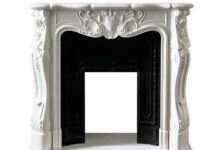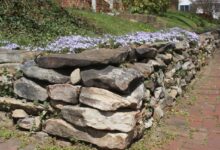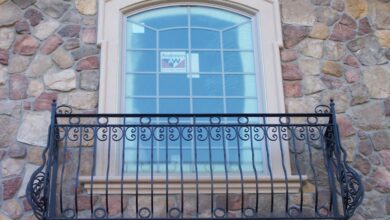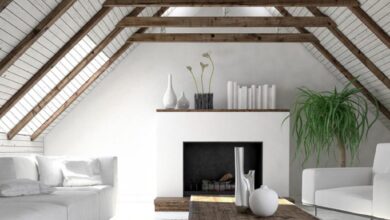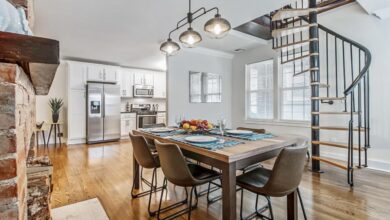Parquet Flooring A Comprehensive Guide
Parquet flooring, with its intricate patterns and timeless elegance, offers a unique blend of beauty and durability. From the classic herringbone to the modern chevron, the variety of designs and wood types allows for unparalleled customization, transforming any space into a haven of sophistication. This guide delves into the world of parquet, exploring its various types, installation techniques, maintenance requirements, design possibilities, and cost considerations, equipping you with the knowledge to make informed decisions about this exquisite flooring option.
Whether you’re a seasoned DIY enthusiast or a homeowner seeking professional advice, understanding the nuances of parquet flooring is key to a successful installation and years of enjoyment. We’ll cover everything from choosing the right wood species to addressing common maintenance issues, ensuring your parquet flooring remains a stunning centerpiece for years to come.
Types of Parquet Flooring
Parquet flooring, a classic choice for adding elegance and sophistication to any space, offers a wide variety of patterns and styles. Understanding the different types available, their installation methods, and maintenance requirements is crucial for making an informed decision. This section will explore the most popular parquet patterns and delve into the differences between solid and engineered wood options.
Parquet Flooring Patterns
Parquet flooring’s appeal lies partly in its diverse range of patterns. The visual impact of each pattern significantly influences the overall feel of a room. Popular choices include herringbone, chevron, and basketweave, each offering a unique aesthetic.
Herringbone: This timeless pattern features rectangular pieces of wood arranged in a zig-zag pattern, resembling the bones of a herring fish. Its strong lines create a visually striking floor, suitable for both traditional and modern interiors. Installation typically involves laying each piece at a 45-degree angle to the adjacent piece, requiring precise measurements and skilled craftsmanship.
Chevron: Similar to herringbone, chevron parquet uses angled pieces, but with the ends precisely mitered (cut at 45 degrees to form a point) to create a continuous, V-shaped pattern. This pattern offers a more refined and contemporary look compared to herringbone, but the mitered cuts increase installation complexity and cost.
Basketweave: This pattern is characterized by its intricate arrangement of small, square or rectangular pieces of wood interwoven to resemble a woven basket. It creates a textured and visually busy floor, ideal for adding warmth and character to a room. Basketweave requires careful planning and precise installation to achieve a seamless and visually appealing result.
Solid Wood vs. Engineered Wood Parquet
The choice between solid wood and engineered wood parquet significantly impacts durability, maintenance, and cost.
Solid Wood Parquet: Made from a single piece of wood, solid wood parquet is known for its exceptional durability and longevity. It can be sanded and refinished multiple times, extending its lifespan considerably. However, it’s more susceptible to moisture damage and is generally more expensive than engineered wood. Solid wood is best suited for stable indoor environments with controlled humidity levels.
Parquet flooring adds a touch of classic elegance to any home, significantly increasing its value. If you’re considering a renovation including this beautiful flooring in France, you’ll likely need financing, so understanding the process of getting a Mortgage in France is crucial. Securing the right mortgage can make your dream of a stunning parquet floor a reality, enhancing both your home’s aesthetics and its market value.
Engineered Wood Parquet: Engineered wood parquet consists of a top layer of real wood veneer bonded to layers of plywood or other stable core materials. This construction makes it more dimensionally stable and less prone to warping or cupping compared to solid wood, especially in areas with fluctuating humidity. While it can be sanded and refinished, the number of times this is possible is limited by the thickness of the top veneer layer.
Engineered wood is generally more affordable and easier to install than solid wood.
Wood Species Comparison
Different wood species offer varied levels of hardness, cost, and aesthetic appeal. Choosing the right species depends on individual preferences, budget, and the intended use of the space.
| Wood Species | Hardness (Janka Scale) | Approximate Cost (per sq ft) | Aesthetic Qualities |
|---|---|---|---|
| Oak | 1360 | $8-$15 | Classic, versatile, strong grain patterns, available in various tones. |
| Maple | 1450 | $9-$16 | Smooth, fine grain, light to medium color, contemporary feel. |
| Walnut | 1010 | $12-$20 | Rich, dark brown color, striking grain, luxurious appearance. |
| Cherry | 990 | $10-$18 | Warm reddish-brown tones, fine grain, elegant look, changes color with age. |
Parquet Flooring Installation
Installing parquet flooring is a rewarding project that can significantly enhance the aesthetic appeal and value of your home. However, proper installation requires careful planning and execution to ensure a long-lasting, beautiful floor. This section details the process, from subfloor preparation to final finishing.
Subfloor Preparation
A properly prepared subfloor is crucial for a successful parquet installation. An uneven or damaged subfloor will lead to problems like squeaking, gaps, and premature wear. The process generally involves several steps. First, the existing floor must be thoroughly cleaned to remove any debris, dust, or loose materials. Next, assess the subfloor for levelness.
Parquet flooring offers a classic, elegant look, but its suitability depends on the room’s humidity levels. While generally not recommended for areas with consistent moisture, like a Bathroom (salle de bain) , you can find engineered parquet options designed for higher humidity tolerance. However, for bathrooms, other flooring choices might be more practical and durable in the long run.
Significant imperfections should be addressed by leveling the surface using self-leveling compound or other appropriate methods. Any damaged areas, such as rot or cracks, need to be repaired before proceeding. Finally, ensure the subfloor is clean, dry, and free from any moisture problems, as this can affect the adhesive and the longevity of the parquet.
Proper subfloor preparation is the foundation for a successful parquet installation. Skipping this step can lead to significant problems down the line.
Parquet Flooring Installation Steps
Installing parquet flooring is a multi-step process that requires precision and patience. The following steps provide a general guide, but always refer to the manufacturer’s instructions for your specific parquet type and adhesive.
- Acclimatization: Before installation, allow the parquet planks to acclimatize to the room’s temperature and humidity for at least 48 hours. This prevents expansion and contraction issues after installation.
- Layout: Plan the layout of the parquet, considering the direction of the grain and any design patterns. Dry-fitting the planks allows you to visualize the final result and make any necessary adjustments.
- Adhesive Application: Apply the adhesive to the subfloor according to the manufacturer’s instructions. Use a notched trowel to ensure even distribution. The amount of adhesive used is critical; too little will result in poor adhesion, and too much will cause difficulties and potentially damage the parquet.
- Plank Installation: Carefully position each parquet plank onto the adhesive, pressing firmly to ensure good contact. Use a rubber mallet to gently tap the planks into place, ensuring a tight fit. Work in small sections to prevent the adhesive from drying out before the planks are secured.
- Grouting (if applicable): For some parquet types, grouting may be necessary to fill the gaps between the planks. Follow the manufacturer’s instructions for the appropriate grout type and application method.
- Finishing: Once the adhesive has cured completely, apply a suitable sealant or finish to protect the parquet and enhance its appearance. This step is essential for maintaining the parquet’s beauty and durability.
Always work in a well-ventilated area and wear appropriate safety gear, including gloves and eye protection.
A simple diagram could show the steps: 1. Clean Subfloor; 2. Apply Adhesive; 3. Lay Parquet; 4. Grout (if needed); 5.
Seal.
Adhesive Options for Parquet Flooring
Choosing the right adhesive is vital for a successful parquet installation. Different adhesives offer varying strengths and weaknesses.
- Water-based adhesives: These are generally easier to clean up and have lower VOC emissions, making them a more environmentally friendly option. However, they may not be suitable for all types of parquet or subfloors and may require longer drying times.
- Solvent-based adhesives: These adhesives offer strong adhesion and fast drying times. However, they typically have stronger odors and higher VOC emissions, requiring careful ventilation during application.
- Reactive adhesives: These adhesives cure through a chemical reaction, offering excellent adhesion and durability. They often require more precise application techniques and are generally more expensive.
The choice of adhesive should depend on the type of parquet, subfloor, and environmental conditions. Always consult the manufacturer’s recommendations.
Typical Parquet Flooring Installation Process: Tools and Materials
Imagine a visual representation: Left Side (Materials):* Stack of parquet planks
- Buckets of adhesive (water-based and solvent-based)
- Notched trowel
- Rubber mallet
- Grout (if needed)
- Sealant
- Measuring tape
- Safety glasses
- Gloves
Right Side (Process):
1. Subfloor Preparation
Parquet flooring offers a classic and elegant look, perfect for adding character to any home. Its rich patterns can really elevate a space, especially when used in a high-traffic area like a hallway; in fact, a beautifully designed Hallway (couloir) can be dramatically enhanced with the right parquet flooring. The durability and timeless appeal of parquet make it a worthwhile investment for years of enjoyment.
A person is using a leveling compound to smooth the subfloor.
2. Adhesive Application
A person spreads adhesive onto the subfloor using a notched trowel.
3. Plank Installation
A person is carefully placing parquet planks onto the adhesive, using a rubber mallet to secure them.
4. Grouting (if applicable)
A person is applying grout to the gaps between planks using a grout bag.
Parquet flooring offers a timeless elegance, perfect for adding a touch of sophistication to any room. Its rich textures and patterns are particularly well-suited to complementing the charm of Rustic French decor , creating a warm and inviting atmosphere. Think of the beautiful, aged wood tones working together to evoke a sense of history and craftsmanship, all enhanced by the classic appeal of parquet.
5. Sealing
A person is applying sealant to the finished parquet floor.
Parquet Flooring Maintenance and Care
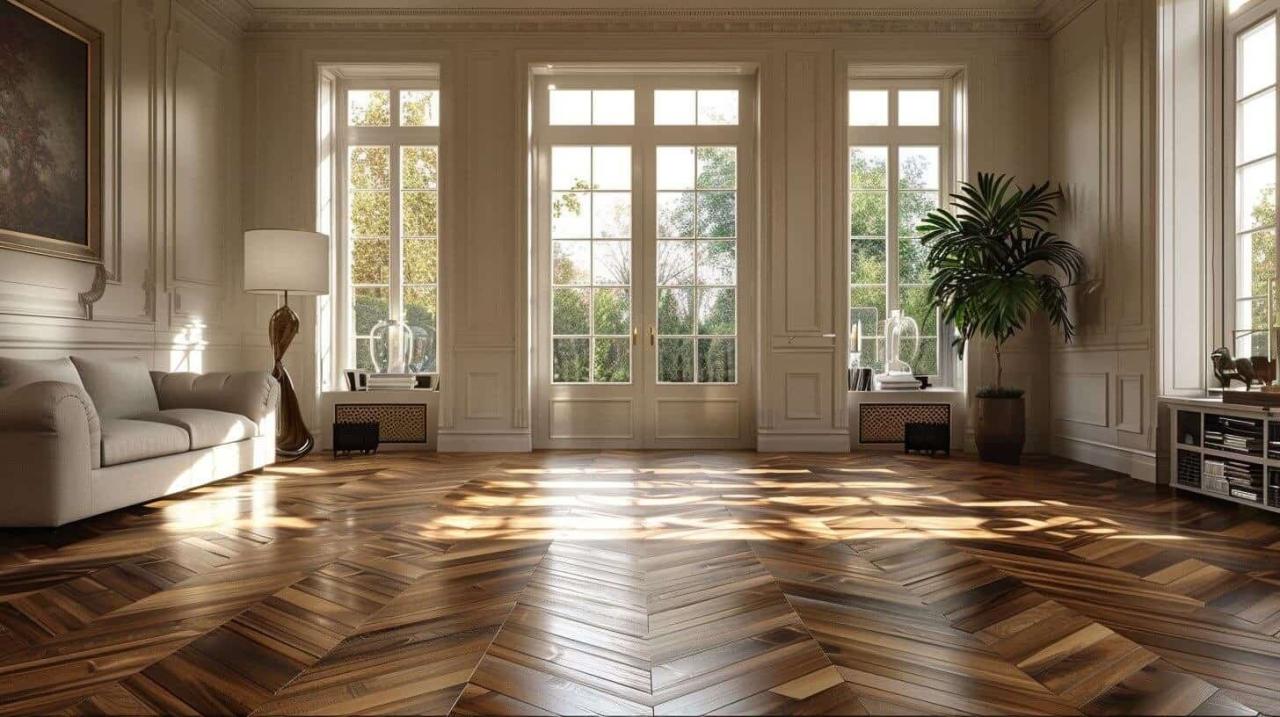
Source: spagnoliflooring.nyc
Parquet flooring, with its timeless elegance and enduring beauty, requires proper care to maintain its luster and longevity. Regular cleaning and preventative measures are crucial to protect your investment and ensure your floors remain a stunning focal point of your home for years to come. Neglecting maintenance can lead to premature wear and tear, making the initial cost of installation seem less worthwhile.
Parquet flooring adds a touch of classic elegance to any home, and it’s a detail you might find yourself considering when looking at potential properties. If you’re dreaming of owning a charming French home, check out this guide on Buying a house in France to start your search. Finding a house with beautiful parquet floors could be the perfect finishing touch to your French countryside escape.
Best Cleaning Methods for Parquet Flooring
Regular sweeping or vacuuming with a soft-bristled brush attachment is essential for removing loose dirt and debris that can scratch the surface. Avoid using vacuum cleaners with beater bars, as these can damage the delicate parquet finish. For spot cleaning, use a slightly damp (not wet!) mop with a pH-neutral cleaner specifically designed for wood floors. Avoid using harsh chemicals, abrasive cleaners, ammonia-based products, or excessive water, as these can damage the finish and wood itself.
A simple solution of warm water and a few drops of mild dish soap can often suffice. Always wring out the mop thoroughly before cleaning to prevent water from seeping into the wood.
Preventing Scratches and Damage
Protecting your parquet flooring from scratches and damage requires proactive measures. Use felt pads under furniture legs to prevent scratches from heavy objects. Place protective mats at entryways to trap dirt and grit before it reaches the floor. Avoid dragging heavy objects across the surface, opting instead to lift and carry them. Regularly inspect your flooring for any loose or damaged pieces and address them promptly to prevent further damage.
Consider using protective floor coverings in high-traffic areas or where spills are more likely to occur.
Repairing Minor Scratches and Dents
Minor scratches can often be buffed out with a wood floor cleaner and a soft cloth. For deeper scratches, you might need a wood filler that matches the color of your parquet. Apply the filler according to the manufacturer’s instructions, allowing it to dry completely before sanding it smooth and applying a fresh coat of polyurethane or wax. For dents, you may need to carefully use a damp cloth and iron (on a low setting) to gently steam the wood and raise the dented area.
This method requires caution and is best attempted on small, superficial dents. For more significant damage, it’s advisable to consult a professional flooring specialist.
Routine Maintenance Schedule
The following schedule Artikels recommended maintenance tasks for your parquet flooring:
| Task | Frequency |
|---|---|
| Sweep or vacuum | Daily or as needed |
| Damp mop with pH-neutral cleaner | Weekly |
| Inspect for damage | Monthly |
| Polish or wax (if needed) | Every 6-12 months |
| Refinish (if necessary) | Every 5-10 years, depending on wear and tear |
Parquet Flooring Design and Aesthetics
Parquet flooring offers a unique opportunity to elevate the aesthetic appeal of any room, transforming a simple floor into a stunning design feature. The versatility of parquet allows it to seamlessly integrate into a variety of interior styles, from the classic elegance of a traditional home to the clean lines of a modern space. Careful consideration of pattern, color, and wood grain can significantly impact the overall atmosphere and feeling of a room.Parquet patterns and their visual impact on different room styles are extensive and offer diverse options.
The choice of pattern can drastically alter the perceived size and shape of a room, as well as its overall ambiance.
Parquet Patterns and Their Associated Design Styles
The selection of a parquet pattern is crucial in determining the overall aesthetic of a room. Different patterns evoke different feelings and suit various design styles. For example, a herringbone pattern lends itself to a more contemporary or even industrial feel, while a basketweave pattern is often associated with traditional or rustic settings.
- Herringbone: This classic pattern, characterized by its V-shaped arrangement of planks, creates a sense of dynamism and sophistication. It works well in modern, contemporary, and even some transitional spaces.
- Chevron: Similar to herringbone but with planks cut at a 45-degree angle, creating a sharper, more angular look. It’s often used in modern and minimalist designs.
- Basketweave: This pattern, formed by interweaving rectangular planks, offers a more traditional and classic feel. It’s suitable for rustic, traditional, and even some farmhouse styles.
- Versailles: A complex and intricate pattern featuring a central motif surrounded by smaller elements. This pattern is typically associated with more formal and opulent settings.
- Block: Simple and straightforward, this pattern uses square or rectangular planks arranged in a grid. It’s versatile and can work in modern, traditional, or even rustic designs depending on the wood choice.
Influence of Color and Wood Grain
The color and wood grain of the parquet flooring significantly contribute to the overall aesthetic of a room. Light-colored woods, such as oak or maple, create a bright and airy atmosphere, ideal for smaller rooms or spaces with limited natural light. Darker woods, such as walnut or cherry, add warmth and depth, creating a more dramatic and sophisticated ambiance, often suited for larger rooms.
Parquet flooring offers a timeless elegance, perfect for adding a touch of sophistication to any room. Its intricate patterns often complement grand architectural styles, such as the lavish details found in Beaux-Arts style buildings. In fact, the geometric precision of parquet can beautifully enhance the overall opulence of a Beaux-Arts interior, making it a popular choice for period restorations and modern homes alike.
The variation in wood grain also plays a role; a busy grain can add visual interest, while a more uniform grain can create a sense of calm and order. For example, a room with white walls and light oak parquet would feel open and airy, while a room with dark walls and dark walnut parquet would feel rich and cozy.
Choosing Parquet Flooring to Complement Existing Furniture and Decor
Selecting parquet flooring that harmonizes with existing furniture and decor is essential for a cohesive and stylish interior. Consider the overall color palette of the room. If the room features warm tones, opt for parquet flooring in a similar warm hue. Conversely, cool-toned furniture and decor pair well with cooler parquet shades. The style of the furniture should also be considered; modern furniture generally complements modern parquet patterns, while traditional furniture pairs better with classic patterns.
For instance, a mid-century modern living room might feature a chevron parquet floor in a light oak, complementing the clean lines of the furniture. A rustic farmhouse kitchen could utilize a basketweave pattern in a reclaimed wood finish to enhance the overall aesthetic.
Parquet Flooring Cost and Value
Parquet flooring represents a significant investment, but its longevity and aesthetic appeal can justify the expense. Understanding the factors influencing cost and evaluating its long-term value are crucial for informed decision-making. This section will break down the cost components, compare it to alternatives, and explore its impact on resale value and the environment.
Factors Influencing Parquet Flooring Cost
Several key factors contribute to the overall cost of parquet flooring. These range from the type of wood selected to the complexity of the installation and the labor involved. Understanding these elements allows for better budgeting and realistic cost projections.
| Factor | Description | Cost Impact | Example |
|---|---|---|---|
| Wood Type | Exotic hardwoods like Brazilian cherry or walnut are significantly more expensive than domestic options such as oak or maple. | High | Brazilian cherry can cost double or triple the price of oak. |
| Installation Method | Solid parquet requires more labor-intensive installation than engineered parquet. Complex patterns also add to the cost. | Medium to High | A herringbone pattern will be more expensive to install than a simple square pattern. |
| Labor Costs | Highly skilled installers command higher rates, especially for intricate designs. Geographic location also influences labor costs. | Medium to High | Labor costs can vary significantly between regions and the installer’s experience. |
| Square Footage | The larger the area to be covered, the higher the overall cost, both in materials and labor. | High | A 1000 sq ft installation will naturally cost more than a 500 sq ft installation. |
Long-Term Cost-Effectiveness Compared to Other Flooring Options
While the initial investment in parquet flooring is higher than some alternatives like laminate or vinyl, its durability and longevity often make it more cost-effective in the long run. Parquet flooring, properly maintained, can last for decades, reducing the need for frequent replacements. Laminate or vinyl flooring, on the other hand, may require replacement every 5-10 years. The long-term savings from reduced replacement costs can offset the higher initial investment.
Parquet flooring offers a classic, elegant look for any home, adding warmth and character to a space. The beauty of such flooring is often enhanced by architectural details, such as a stunning wrought iron balcony which can frame a view and complement the rich tones of the wood. Ultimately, both elements contribute to a sophisticated and inviting atmosphere, making the entire home feel more luxurious.
The right parquet flooring can truly make a statement.
Resale Value Increase
High-quality parquet flooring is often considered a desirable feature that can increase a home’s resale value. Potential buyers frequently associate parquet with luxury, craftsmanship, and lasting value. A well-maintained parquet floor can be a significant selling point, especially in competitive markets. For example, a home with beautifully restored parquet flooring might command a higher price than a comparable home with less desirable flooring.
Environmental Impact
The environmental impact of parquet flooring is multifaceted. Sustainable sourcing of wood from responsibly managed forests is crucial to minimize deforestation and protect biodiversity. Look for certifications like the Forest Stewardship Council (FSC) label to ensure the wood comes from environmentally responsible sources. At the end of its lifespan, proper disposal or recycling options should be considered.
Some companies offer parquet flooring recycling programs, while others can be repurposed or used for other projects.
End of Discussion
Ultimately, the allure of parquet flooring lies in its ability to seamlessly blend aesthetics and functionality. From its enduring beauty and potential to increase resale value to its eco-friendly options, parquet offers a rewarding investment. By understanding the different types, installation processes, and maintenance needs, you can confidently choose and care for your parquet flooring, ensuring it remains a source of pride and elegance in your home for many years to come.
The effort invested in proper installation and ongoing care will be well rewarded with a stunning and long-lasting floor.
Query Resolution: Parquet Flooring
Can parquet flooring be installed in bathrooms?
While not ideal due to moisture, certain engineered parquet with appropriate sealants can be used in low-moisture bathrooms. Consult a professional for guidance.
How often should I refinish my parquet floor?
Refinishing frequency depends on wear and tear, but typically every 5-10 years is a good guideline. Heavily trafficked areas may require more frequent refinishing.
What’s the difference between solid and engineered parquet?
Solid parquet is made entirely of hardwood, offering superior durability but higher cost. Engineered parquet uses a plywood core topped with a hardwood layer, making it more stable and affordable but less durable.
Can I install parquet flooring myself?
While possible for experienced DIYers, professional installation is often recommended, especially for complex patterns. Improper installation can lead to problems down the line.

